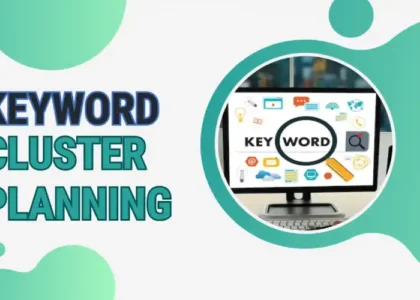SaaS (software as a service) solutions are one of the fastest growing segments of the IT industry. Software-as-a-service (SaaS) models that operate on a subscription basis and are hosted at the center of a remote cloud network have become essential for many organizations for a variety of reasons, including being flexible and resourceful.
Of course, with the pandemic requiring more remote work than ever before, the demand for SaaS will only grow. Thus, the software-as-a-service market is expected to grow from $130.69 billion in 2021 to $716.52 billion in 2028 at a CAGR of 27.5% – how impressive is that?
Why SaaS brands need to identify their competitors?
A SaaS competitive analysis(or competitive analysis) is a tool that allows you to find out how your business stacks up against the competition. You should divide these competitors into two categories: direct and indirect competitors.
Direct competitors offer similar products to you and are competing for the dame market. They target the same pain points and can provide the same valuable features as you. Meanwhile, indirect competitors offer different types of products but reach the same target market.
You can also track companies that are not your competitors at the moment but will be in the future. For example, let's say you have a project management solution for a B2B team. And you've heard of startups offering consumer-facing task management solutions. It doesn't have to be your current competitors. But if they want to expand or go B2B, it's not a leap for them. Integration platform as a service (iPaas) can also be used here, but the benefits of ipaas is a topic for another day.
So,What is the Importance of Competitive Analysis?
Competitive analysis is like leveling your playing field. It not only gives you information about your competitors. It also gives you an assessment of your own business and provides a much-needed SaaS competitive advantage. Knowing your playing field is critical to seeing the favorable S-curve and long-term growth of your SaaS business. Some of the benefits that competitive analysis provides are:
- Show your strengths and weaknesses.
- Discover potential market opportunities.
- Help build your value proposition.
- A way to learn from other companies' mistakes.
5 Strategies to Find SaaS Competitors
There are so many ways to go about finding your SaaS competitors, but we’ve got a few simple strategies that will help you get the job done and answer the question “how do you do a competitor analysis on SaaS?”.
1. Google keywords to find your best online competitors
This is a simple but effective technique. Just take the keywords you've already established and use Google to see who else is doing well in the same position. You need to create a list of companies and domain names that are good matches for your keywords.
Include those who have risen to the top of the rankings through online advertising, as well as those who rank naturally, among your competitors. If your business specializes in providing goods or services to a local market, you need to know who your local competitors are.
An easy and quick way to do this is to include the words "near me" in your search term. This is where you can stop and make a list of what you have found and see if your online competitors are who you think they are. To take it a step further, check out one of our posts on how to find out what your competitors are doing and how to optimize their sites.
2. Use the "Related:" search operator on Google
You can also use the related search operator: Google to help you identify high-quality pages that Google thinks are similar to yours and therefore sees them as your competition.
3. Check your niche directory listings
Directories help you identify competitors in your niche or local areas. When submitting your business to niche or local directories, find out who else provides similar services in your niche or area.
Tip: Make sure your directory listings are updated with all the correct information about your business. This will help you improve your local search performance. You can learn more about it here.
4. Use SEM Rush for a quick online overview of the competition
SEMRush is a competitive research tool that provides keyword, ranking, and traffic data. This is a subscription-based service, but there is valuable, albeit limited, data available in the free version.
To see the five websites that SEMRush considers to be your competitors, enter your domain, and scroll down to the "Top Organic Competitors" page. Also, don't forget to look at your competitors' paid advertising, which is a rich source of competitive data.
5. Ask who your online competitors are
Finally, don't forget the obvious! Sometimes it's easiest to ask a longtime employee or owner of the company you work for. Manual searches and tools don't always show everything, and sometimes important threats can be missed – especially if you're new to the business or industry.
The Bottomline
In SaaS, competition can be two things: an indicator of demand and motivation for development. The competition validates the problem you are trying to solve.
If no one is trying to build a particular SaaS solution, it probably means there isn't much demand for it. However, there are times when you have no competition for a product in high demand. If you are lucky enough to find yourself in this position, you can take advantage of the opportunity for a blue ocean strategy.
At the end of the day, competition in SaaS is to the benefit of the customer. After all, it encourages companies to improve the quality of their products and lower prices. As a SaaS company in healthy competition, you should strive to stay ahead of your competitors for more than just growth. However, you should focus on providing the best value and experience to your customers.





